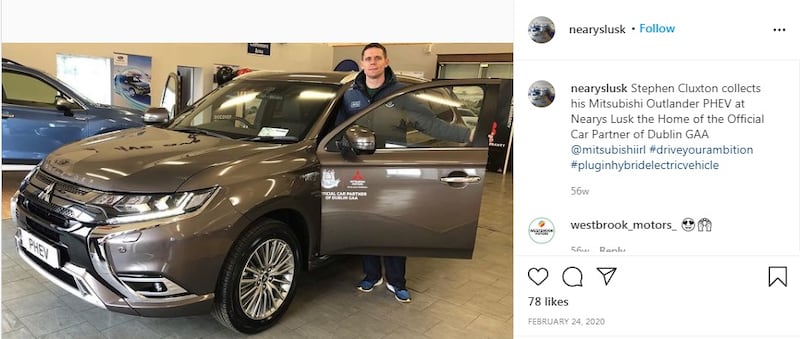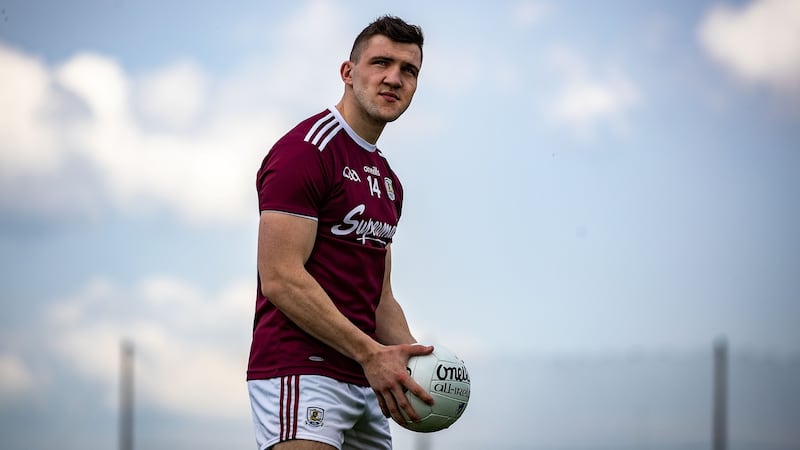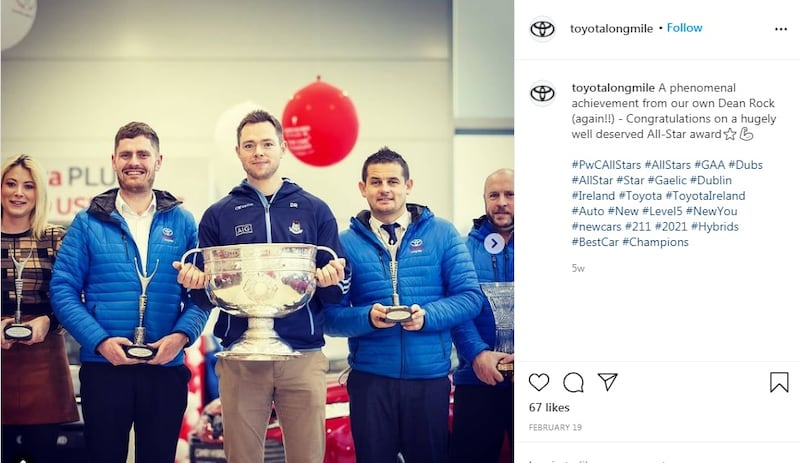GAA players may not be getting paid to play the sport they commit so much of their lives to but ‘pay for posts’ is well and truly here.
Payment can be monetary, in the form of free gloves, supplements, or for some even a car. But what makes GAA players so attractive for advertisers, and what makes a player the perfect brand ambassador?
"For years companies have been taking advantage of our GAA players so now there's an opportunity to be fair about it and to get their value and be open about it," explains Trevor Twamley, co-founder of sport management agency, Sport Endorse.
"You don't get paid as players and we know that, but I don't see any problem with them making a few quid outside of playing in Croke Park. In fact I'd encourage it," says Twamley, whose Dublin-based agency represents more than 100 GAA players, past and present.
Dublin's Dean Rock can command €1,300 per sponsored Instagram post – he has nearly 37,000 followers on the social media platform. Galway footballer Damien Comer can demand €665 per post, and a third of that for an Instagram story. Tipperary dual player Orla O'Dwyer – currently playing with the Brisbane Lions in the AFLW – can charge €830 for one post to her 24,000 followers.
The contrasting worlds of the influencer and the GAA have collided, and the holy grail for these sought-after athletes is a sponsored car.
"Instagram is where it's at in terms of brand and getting your message across," explains Škoda Ireland's head of marketing and product, Raymond Leddy.
“Giving a player a demo car or giving anybody a car comes with its challenges, for one there’s a cost for the brand in giving them a car. If you’re looking at depreciation, it’s five, six, seven thousand a year. So you need to earn that back from the player.
“That’ll depend on their profile and the kind of engagement they have with your audience. Some players for example would have a big presence but they don’t post that often. So for me looking for a player, it doesn’t necessarily have to be the superstars but you want somebody with enough audience who is quite active, showing their everyday activities.”

While most GAA players partner with local dealerships, some car companies have national brand ambassadors too. Others sponsor county teams and provide cars to several players and management as part of that agreement.
A player’s value in the deal traditionally centred on being seen driving around the local area in the car, attending events in the local dealership, or engaging with the media to push company-related activity. Social media collaboration wasn’t something that was as prevalent when Škoda sponsored Tipperary GAA for four years from 2011.
Vehicle sponsors
“It’s very difficult in general with sponsorship to gauge a return on investment and to measure it,” says Leddy. “You have to be creative and work it very hard. It’s a bit of a gamble, and pays off for some brands more than others.
“You need to have a plan first of all before you get stuck into it. When we were with Tipperary we had some players who were driving our cars and we had like an Off the Ball-style event in front of an audience at a dealership where we’d have a Q&A type thing with the players. But you have to work it and you have to put money into it.
“Instagram is where we are living in now. It’s visual, it can be video and the audience can engage with it.”
Mitsubishi Ireland are Dublin GAA's vehicle sponsors providing the likes of Stephen Cluxton, Jonny Cooper, Cian O'Sullivan and Con O'Callaghan with plug-in hybrid electric cars worth almost €40,000. They have also provided cars for several members of the hurling and ladies football squads including Danny Sutcliffe and Lyndsey Davey.

Mitsubishi describe the opportunity to “tap into the grassroots of the organisation” and “having access to the Dublin GAA fan base” as “invaluable”.
Renault are county sponsors for both Wicklow and Westmeath – and similarly provide several panellists with cars – while a number of their dealerships have long established partnerships within their locality. Renault say they are attracted to GAA players "because of the respect they have in their local communities".
As well as using current players as ambassadors, well-known past players such as Paul Galvin and Bernard Brogan remain very much in demand, particularly those involved in the media.
“GAA players’ engagement level on social media is a lot higher than any other sports,” says Twamley. “What does that tell you? That the GAA fans are fanatical about their players and their counties and they really are interested in the player and the person. They are relatable.
“When I met Damien Comer, I have a calculator app and I checked out his engagement on social media, and it was up at 9.4 per cent. Dean Rock’s is at 11 per cent. And Kim Kardashian’s is at around one per cent. Now, she charges 500 grand a post because she has a gazillion followers but when there’s a lower percentage people go in and have a look at them and then move on.”
Engagement rate measures how users interact with the content on your profile, taking into account your number of followers, likes, comments, and shares.
Very selective
“I’m not probably looking for a superstar who is ticking all the boxes, promoting brands, running the course,” explains Leddy when describing his perfect ambassador.
“Someone who does stuff that’s quite natural, natural to them. Not pushing products. Has an identity, that’s a bit unique in their own way, a bit quirky, a bit alternative. Has a decent audience. Posts regularly. You give them a car and they’ve video up of them getting in and out of it, of putting the gear in the boot for training, talking in the car or a piece to camera in it.
“You need someone to endorse your product, and you need to be very selective. Just because they’ve a big profile and a big audience, doesn’t mean your brand is going to benefit from them, it’s not always the way it works. But if you get – and it works well for GAA stars – a personality who is not an A-lister and they are half reliant on the car they’ll work very hard at it for you.”

The Sport Endorse platform provides an online marketplace for athletes to mix with potential sponsors and to apply for various promotional opportunities. Their talent includes New York Giants tight end Evan Engram, NBA basketballer Torrey Craig, Irish rugby player James Lowe and Premier League player John Egan.
“We have Premier League footballers on our platform now and they think they just have to apply and because of their name they get the deal but it’s not the case,” says Twamley.
"It's not always the top Johnny Sexton who gets it because of their name. What we are finding is brands want an authentic athlete to promote their brand. They are looking for athletes that they can grow and build with through their sporting career."
In a world where people work full-time as social media influencers, what's stopping a GAA player from living off their endorsements? In recent years Wexford hurler Lee Chin told reporters his main source of income was from the sponsors he was working with.
“I got a call last week from an ex-player who was asking me about two teenagers who were going to be the next big thing in his local town and he said “ they need to be thinking about their value and worth now for when they become county minors and county seniors don’t they?” – and I said yeah they do!
“Look the world is becoming more commercial, whether you like it or loathe it GAA players are getting money and for them it’s about pricing it right, knowing what to charge, what their value is. What is a post worth and what is a story worth and to be able to ask for it.”
Twamley is hoping to work with the GPA in the future to help inform and guide their players to take advantage of the opportunities earned.
“Everyone else is charging money to get a post out or to get their brand recognised so why shouldn’t the GAA players?”












